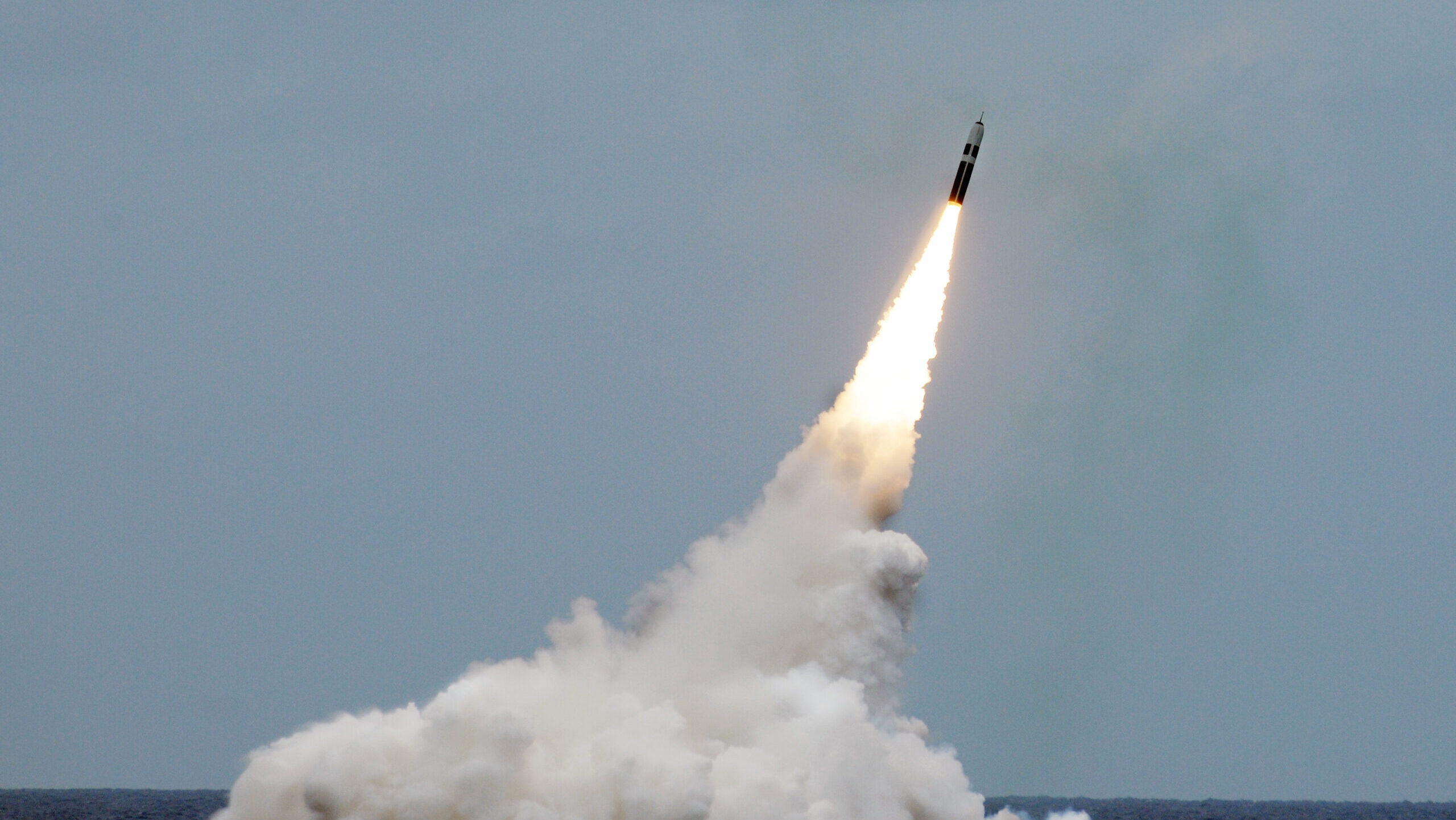
An unarmed Trident II D5 missile launches from the Ohio-class fleet ballistic-missile submarine USS Maryland (SSBN-738) off the coast of Florida. (US Navy Photo John Kowalski/Released)
WASHINGTON — The leaders of a congressional commission that studied the country’s nuclear weapons acknowledged the gap the Pentagon’s long sought sub-launched nuclear cruise missile could fill, but stopped short of endorsing the controversial program today while testifying to Senate lawmakers.
The comments from the two officials came during a Senate Armed Services Committee hearing about the final report [PDF] from the “Congressional Commission on the Strategic Posture of the United States,” which was published earlier this month.
The commission, established by the Fiscal Year 2022 National Defense Authorization Act, was chaired by Madelyn Creedon, a former high-ranking official at both the defense and energy departments, as well as Jon Kyl, the former Republican senator from Arizona, who served as the panel’s vice chair.
During the hearing, Sen. Deb Fischer, R-Neb., listed off a number of characteristics for a potential capability that the report stated was necessary for the United States’ arsenal, and asked Creedon and Kyl to weigh in on whether the US Navy’s Submarine-Launched Cruise Missile — Nuclear, also dubbed SLCM-N, would “meet those attributes.” Kyl briefly responded, “The answer is yes.”
“Of the possible weapon systems that could fit all those criteria, is SLCM-N the system that could deliver this capability to the commanders most quickly?” Fischer followed up.
“I don’t know the answer to that because I don’t know what other systems people might propose [that] would satisfy those requirements,” Kyl said. “What the commission did was to decide what requirements were needed to give the president the maximum number of options.”
At another point in the hearing, Creedon explained that while the commission outlined what attributes the United States’ capabilities would need, the panel refrained from “picking winners and losers” in terms of specific systems.
In total, Creedon, Kyl and the 10 other commissioners who produced the report concluded the United States is facing the “unprecedented” threat of having to fight two nuclear-armed, peer adversaries — Russia and China — simultaneously, a possibility not foreseen by the last independent panel that assessed the country’s strategic forces back in 2010. Kyl today summarized the report’s conclusions, more than 100 findings and 81 recommendations, during the hearing by stressing just a single word: “urgency.”
The testimony comes on the same day that the Pentagon separately released its annual “China Military Power” [PDF] report, which detailed China’s ever-growing nuclear arsenal and missile launch capability.
Related: New Pentagon Report Details China’s Growing Nuclear Arsenal, Possible New Missile Effort
The SLCM-N is a research and development program managed by the Navy. The Biden administration in recent budget submissions has sought to terminate the effort, but those moves have stirred controversy on Capitol Hill, where defense hawks have argued the capability is a necessary part of the nuclear arsenal. Several uniformed leaders at the Pentagon have also publicly split with the White House to support SLCM-N’s continued development.
Although the commission’s leaders did not endorse SLCM-N, they did say there was a need for the US to possess credible weapons and missile defense capabilities that stop short of “massive retaliation.” They described the possibility of China or Russia using “coercive” or “limited” attacks against domestic industrial or military infrastructure.
“The consensus of the commission is that we all agreed that the president needs more options,” said Kyl.
One issue that the commission’s report did not address — ostensibly irking senators on both sides of the aisle — was the cost of revitalizing the nuclear arsenal.
Creedon told lawmakers the commission did not discuss the issue of cost primarily because it was not part of the panel’s mandate. Kyl added that it would be “folly” to give a specific dollar figure because much of the spending would take place many years in future when the changes in material costs and the rate of inflation make estimates generated today unreliable.
But Kyl did argue that the costs of a credible nuclear deterrent are manageable when considering how the nuclear arsenal is already baked into the defense budget as well as the fact that paying servicemembers ultimately takes more funding than technology programs.
“This is half as much as we were spending during the build-up during the 1980s,” he said. “This is an affordable thing for the United States of America to prevent nuclear war.”








